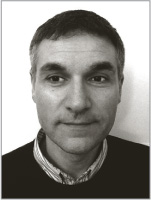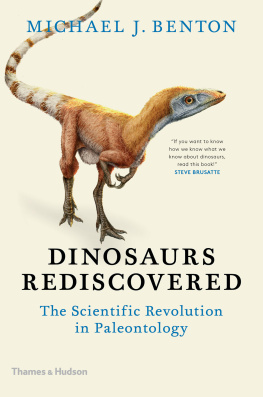THE SAUROPOD DINOSAURS

THE SAUROPOD DINOSAURS
LIFE IN THE AGE OF GIANTS
MARK HALLETT
AND
MATHEW J. WEDEL

2016 Johns Hopkins University Press
All rights reserved. Published 2016
Printed in Canada on acid-free paper
9 8 7 6 5 4 3 2 1
Johns Hopkins University Press
2715 North Charles Street
Baltimore, Maryland 21218-4363
www.press.jhu.edu
Library of Congress Control
Number: 2015956754
ISBN 978-1-4214-2028-8
(hardcover: acid-free)
ISBN 978-4214-2029-5
(electronic)
A catalog record for this book is available from the British Library
Special discounts are available for bulk purchases of this book. For more information, please contact Special Sales at 410-516-6936 or .
Johns Hopkins University Press uses environmentally friendly book materials, including recycled text paper that is composed of at least 30 percent post-consumer waste, whenever possible.
To the three women in my life who helped to set and keep me on my course as an artist, naturalist and writer. First, my mother, Joan, who encouraged me to draw and dream. Second, my Aunt Merlyn, who promised me that wonders awaited at the top of the museum steps that day, if I could overcome the ordeal of my prosthesis. Lastly, my wife, Turi, whose patience and love has eased the occasional loneliness of art and writing.
MARK HALLETT
To my parents, John and Norma Wedel, for taking me to countless museums as a kid, for never getting tired of hearing about dinosaurs, and for raising their kids to love animals, the outdoors, and reading. Mom and Dad, heres your book.
MATHEW J. WEDEL
The seasons came and went, and seemingly everything changed and nothing changed. There were images of sauropod necks and backs glistening in monsoonal rains. Of lush savannahs, clouds of insects, and streams of migrating giants. Of great, broad swaths of red and black mud cut by game trails... of masses of fibrous dung, of blood-soaked earth, and of chunky hatchlings arriving with the rains, representing the hope for generations and generations to come.
DALE A. RUSSELL
The Dinosaurs of North America: An Odyssey in Time
CONSULTANTS

MARK HALLETT
MATHEW J. WEDEL
In the writing of this book, the two coauthors express their most sincere appreciation and thanks for the knowledge and advice provided by consulting paleontologists pictured below.

KRISTI CURRY ROGERS, PhD
Macalester College
Curry Rogers is a leading authority on the anatomy, evolution and systematics of titanosaurian sauropods and has participated in several field seasons in Madagascar, one of which led to the discovery of the nemegtosaurid titanosaur Rap-etosaurus krausei, which she described in 2001. Her work has produced major insights into the paleobiology of titanosaurs, and she is an editor and contributing author of The Sauropods: Evolution and Biology, an anthology of sauropod evolution, biomechanics and systematics.

CAROLE T. GEE, PhD
University of Bonn
Gee is a senior research scientist in paleobotany, Division of Paleontology at the Steinmann Institute, University of Bonn, Germany, where she studies the morphology, taxonomy and taphonomy of Mesozoic and Tertiary plants. The editor of the book Plants in Mesozoic Time and an author and editor for Biology of the Sauropod Dinosaurs, she currently studies the genus Araucaria, the Late Jurassic flora of the Morrison Formation and the relationship between Mesozoic plants and herbivorous dinosaurs.

JOHN R. HUTCHINSON, PhD
Royal Veterinary College, University of London
Hutchinson is a professor of evolutionary biomechanics and studies how animals move and how the progressive adaptations of their movements evolved, especially in larger land animals. He has studied elephants, birds and diverse dinosaurs such as Tyrannosaurus, among other species. His work in the science of biomechanics has clarified how giant size limits the various abilities of land animalsincluding sauropodsto move quickly or support their weight. He is an associate editor of Proceedings of the Royal Society.

PAUL UPCHURCH, PhD
University College London
Upchurch has published 70 research articles and 12 book chapters, mainly focusing on the systematics and evolution of sauropod dinosaurs. Currently his work centers on large-scale evolutionary patterns that occurred during the Mesozoic, including the impact of plate tectonics, changes in sea level and climate change on the geographic distributions of dinosaurs and other land vertebrates. He is a major authority on sauropod feeding ecology, in which his studies have investigated the relationship of jaw and tooth morphology to feeding patterns and resource partitioning.
CONTENTS

Seconds later the mists are swept aside by tall, muscular columns like moving tree trunks, colossal bodies and towering necks.
PREFACE
OUT OF THE MISTS
If she or he could go back in time, what might a journal entry from a sauropod field biologist be like? Perhaps the following:
GEOCHRONAptian-Mid-Albian, 112 MYA
oklahoma, North America
5:26 a.m.: The milky ground fog, barely noticeable a few hours ago, has now covered everything except the trees. With the cooling temperature of last night, my recorder picks up a few last piercing trills and screeches of the marsh frogs, which have now dwindled to an occasional booming honk from the larger species that havent chilled to inactivity. As late as yesterday, the baked, red-gray surface of the hardpan near my camp held no life. When the fury of the storm broke over the dry Araucarites woodlands after days of buildup, however, the rain must have awakened the sleeping lives entombed in the concrete clay below. Vast sheets of water collected within 20 minutes, and frogs in the thousands fought their way up to the sweet, percolating moisture, transforming the hardpan and other areas like it into frenzied mating areas.
5:38 a.m.: Chilled and shivering, I wait. As the sky lightens, there are crunches and snaps out in the fog toward the plain. Distant, but coming closer every few minutes, deep, throbbing rumbles begin to fill the air, and I can actually feel the ground vibrate. Seconds later the mists are swept aside by tall, muscular columns like moving tree trunks, colossal bodies and towering necks. Splashing across the pond, huge clawed and padded feet are propelling the enormous shapes smoothly, effortlessly toward the
Next page
















